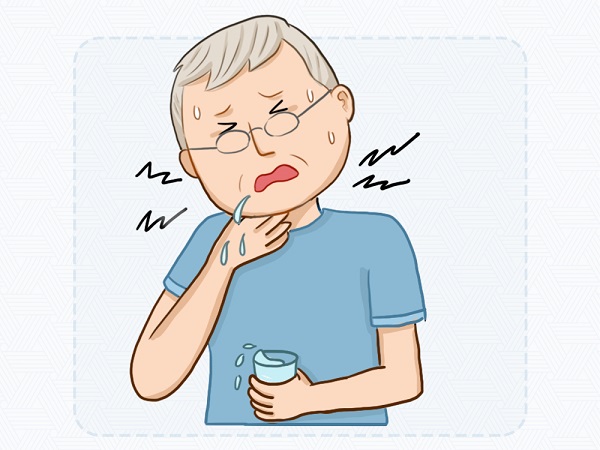Aspiration is a common occurrence in our daily lives. Surely many have experienced choking while hastily drinking water. This is an instance of aspiration.
Mild aspiration manifests as sudden bouts of coughing, a protective reaction of our airways. In severe cases, it can lead to aspiration pneumonia, respiratory distress, suffocation, and potentially life-threatening situations. So let’s explore aspiration together.
- What is Aspiration?
Aspiration is the process where varying amounts of liquids or solid food, secretions, or blood enters the airways below the larynx during swallowing or even when not eating.
Based on clinical symptoms, aspiration can be categorized into overt aspiration and silent aspiration.
Overt aspiration happens when a patient shows immediate signs such as irritative coughing, difficulty breathing, and even cyanosis or suffocation after aspiration.
Aspiration that happens without the presence of coughing is termed silent aspiration. Silent aspiration can occur in healthy individuals or in patients with normal airways or artificial airways. Regarding artificial airways, patients with tracheostomies have a higher rate of silent aspiration. Clinically, it’s common to find patients re-intubated and on ventilatory support due to aspiration pneumonia caused by silent aspiration not long after successful extubation. Reports suggest that overt aspiration only makes up 10% of all aspirations; the vast majority are silent aspirations.
- Recognizing Silent Aspiration
Identifying early signs of silent aspiration is vital for its prevention and treatment. Here are some early symptoms:
- Coughing and phlegm: After aspiration, patients usually have a forceful coughing reaction to clear foreign matter in the trachea, accompanied by the production of a large amount of phlegm.
- Shortness of breath and difficulty breathing: When foreign matter enters the trachea, patients may experience shortness of breath and difficulty breathing – the most apparent symptoms of silent aspiration.
- Discomfort and voice change in the throat: Due to irritation in the throat, patients may experience discomfort, pain, a burning sensation, and voice changes like hoarseness or wheezing.
- Nausea and vomiting: Aspiration may cause stomach contents to reflux into the mouth, causing nausea and vomiting.
- Appearance of abnormal substances in the mouth: The presence of unusual substances such as phlegm, blood, or food in the mouth could be due to aspiration.
If these symptoms appear, seek medical attention immediately for further examination and diagnosis. Early detection and treatment of silent aspiration can prevent further physical and psychological harm, ensuring patient health and wellbeing.
- Factors leading to Aspiration
- Age factors: As one ages, esophageal sphincter relaxation, sensory reduction in the pharynx, weakened swallowing reflex and cough reflex become more common, making elderly people more prone to gastroesophageal reflux, leading to aspiration.
- Pathological factors: Cerebrovascular accidents, altered consciousness, long-term bedridden patients are prone to aspiration, especially those with long-term nasogastric tubes.
- Eating position: Incorrect posture and position, such as lying flat while eating or swallowing with the head tilted back, can easily lead to aspiration.
- Harm of Aspiration
After aspiration, it can cause aspiration pneumonia, breathing difficulty, suffocation, and can be life-threatening in severe cases.
- Difficulty breathing: Aspiration can block the airway, leading to difficulty breathing or even suffocation.
- Pneumonia: Aspiration can introduce bacteria, viruses, and other sources of infection into the lungs, leading to pneumonia and other lung infections.
- Chronic Obstructive Pulmonary Disease: Long-term aspiration can lead to or exacerbate chronic respiratory diseases like COPD.
- Suffocation: Severe aspiration can cause suffocation and even death.
- Prevention of Aspiration
- Maintain correct posture: Lying flat makes silent aspiration more likely. Therefore, for older people, bedridden patients, and others, positions such as semi-recumbent or side-lying should be adopted to reduce the chance of aspiration.
- Food choices: Prefer pasty food which is uniform in density, has appropriate stickiness, doesn’t disperse easily, and doesn’t linger.
- Assess the patient’s condition: Body strength, swallowing ability, chewing function, consciousness status, etc. should be evaluated, and the way to ingest food should be decided based on the condition of the disease.
- Pay attention to meals: Chew slowly and swallow small bites, don’t eat too quickly or too much, make sure there’s enough time to swallow; confirm that the previous bite of food has been completely swallowed before eating more.
- Encourage coughing and breathing exercises: They can enhance the recovery of protective physiological reflexes, assist the patient in expectorating phlegm, and prevent the occurrence of aspiration.
- Avoid involuntary smoking: Involuntary smoking is one of the main factors causing silent aspiration, so smoking should be avoided, as should exposure to secondhand smoke.
- Regular oral care and examination: Bacteria in the oral cavity can easily cause infections, so oral hygiene should be maintained and oral examination should be regularly performed.
- Prevent reflux of stomach contents: Overeating, eating too quickly, excessive bending of the body or staying in the same position for a long time, such as bending over, bowing the head, etc., should be avoided.
- Timely detection and treatment of symptoms: If symptoms such as cough, difficulty breathing, discomfort in the throat appear, you should seek medical attention promptly for diagnosis and treatment.
In summary, prevention and treatment of silent aspiration need to start with daily life habits such as diet, lifestyle habits, body posture, etc., as well as oral hygiene and regular check-ups, timely detection and treatment of symptoms to ensure health.
